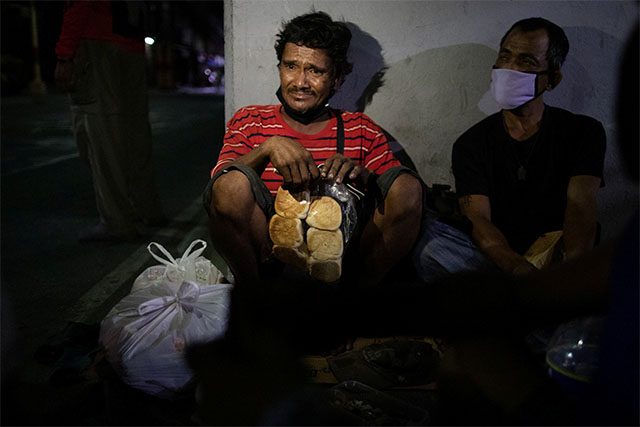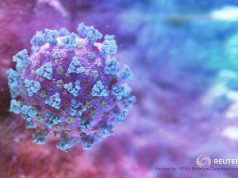
(UPDATED July 2, 2020; 4:18 p.m.) Presidential spokesperson Harry Roque on Tuesday afternoon announced that some areas will move to general community quarantine or modified enhanced community quarantine by May 16, which means that some restrictions will be relaxed in those areas.
“Iyong ating patakaran ngayon po sa ECQ, wala pong movement regardless of age and health status. Halos wala pong economic activity except doon sa mga utility services gaya ng pagkain, power at tubig at other economic sectors. Wala pong transportasyon na pampubliko at wala rin pong physical na mga klase,” Roque said.
“Sa ilalim po ng Modified ECQ, limitado po ang movement ng tao para po sa pagkuha ng essential services and work,” he added.
Roque said the difference is that there would be gradual reopening of the economy and some select manufacturing and processing plants would be allowed to operate at a maximum 50% capacity.
“Ano po itong mga industriya na ito? Isasapinal po ngayong araw iyan at bibigyan natin ng anunsiyo kung hindi mamayang hapon, bukas po, magkakaroon din tayo ng press briefing. Wednesday, normally wala pong press briefing, magkakaroon po tayo bukas para idetalye kung ano po iyong naaprubahan ng IATF (Inter-Agency Task Force) na mga industriyang magbubukas,” he said.
The presidential spokesman also announced that those residents living in areas under general community quarantine will no longer have the chance to get the second tranche of the government’s financial assistance or the Social Amelioration Program.
President Rodrigo Duterte earlier tasked the Department of Social Welfare and Development to give financial aid to low-income families and other qualified households through local government units. These families are among the severely affected by the long-running enhanced community quarantine that was imposed in several parts of the country since March 17.
In his virtual press briefing, Roque explained that the first tranche of the financial aid is initially targets 18 million families but the national government later approved additional 5 million to reach more Filipinos in need of help.
“Pero dahil limitado po ang pondong binigay ng Kongreso, iyong mabibigyan po sa second tranche ay iyon lamang nananatili sa ECQ na dineklara noong pangalawang buwan ng ating Pangulo,” Roque said.
“Malinaw po iyan. Doon sa unang buwan, lahat nang nasa ECQ, may ayuda. Sa pangalawang buwan, iyong mga lugar na nakatira lamang sa ECQ ang may ayuda. Wala na pong ayuda iyong mga nasa GCQ area,” he added.
Last Sunday, several residents camped out and line up for hours to get the first tranche of the financial aid as the government set May 10 as the deadline of aid distribution.
Roque’s latest announcements were questioned by Filipino online users who are speculating that this could be the reason why some areas were placed under GCQ.
“Baka ginawa lang MECQ and GCQ para di na kailangan magdistribute ng SAP. Grabehan. Wala na ngang mass testing, walang contact tracing, wala pang ayuda. Seryoso, nasaan ang bilyones?” A Twitter user asked.
Kaya pala ginawang GCQ kasi pag GCQ na di na kasama sa 2nd Tranche ng SAP. Hahahahaha parang bahala na kayo mamatay wala na pang tustos gobyerno sa inyo.
— J (@anabiancs) May 12, 2020
Others also lamented that some Filipinos have yet to receive the first tranche of social amelioration program while some expressed worry for those who are relying on the government’s financial aid.
“While there are still movement restrictions for Modified ECQ and GCQ areas, the second tranche of the Government’s Social Amelioration Program (SAP) will only be available for those who are in ECQ. They haven’t even reached every family during ECQ,” a Twitter user said.
ngayon ko lang narealize na tatlong areas (lalawigan??) na lang ang under MECQ after May 15, the rest will be GCQ and lifted ECQ. ibig sabihin, people from NCR, Cebu City, and Laguna na lang ang makakareceive ng ayuda from the SAP (as per dwsd guidelines) ………… pic.twitter.com/hEKfkOxhNd
— almond (@katszuku) May 12, 2020
Omg sana wala talagang umaasa sa second tranche ng SAP sa mga lugar na GCQ na. Sana maayos talaga yung maging transition.
Basta-basta na lang inalis eh.
— meeseeks (@pjrufinooo) May 12, 2020
The IATF classified areas with high risk of spreading COVID-19 under modified ECQ or ECQ, moderate risk areas under GCQ and lifted GCQ or ECQ in low-risk areas.
Only Metro Manila, Laguna and Cebu City are under modified ECQ or ECQ.
Here are some guidelines for areas under modified ECQ:
- Limited movement within zone for obtaining essential services and work
- Operation of selected manufacturing and processing plants up to maximum of 50% workforce
- Limited transporting services for essential goods and services
- Suspension of physical classes
On the other hand, guidelines for GCQ and modified GCQ are as follows:
GCQ
- Limited movement to services and work within buffer zone and outside buffer zone
- Operation of government offices and industries up to maximum of 75% workforce
- Limited transporting services to support government and private operations
- Flexible learning arrangements; operate at limited capacities to cater to students
Modified GCQ
- Permissive socio-economic activities with minimum public health standards
Health Undersecretary Maria Rosario Vergeire explained that the classification of community quarantine was thoroughly vetted with the aid of COVID-19 cases data.
She said the decision-making was based on the review and discussion with the IATF Sub-Sub-technical Working Group on Data Analytic which is headed by Health Undersecretary Lilibeth David.
“So unang-una po, ang alam nating lahat, of course, we base it on health. Doon po sa ating health na mga kunsiderasyon, atin pong unang-unang tinignan ang LGU Epidemic Response Framework. Dito po natin nakikita sa framework na ito kung ano po ang klasipikasyon ng bawat local governments natin para masabi natin kung ito ay low risk, moderate risk or high risk,” Vergeire said.
“Also, sa kaalaman po ng lahat, ito ang lagi nating ipinapaliwanag sa lahat ng mga, ito pong ating case doubling time and critical care utilization rate. Ito po iyong dalawang health indicators na atin pong ginamit mula po tayo ay nag-umpisa para magbigay-desisyon for General Community Quarantine and Enhanced Community Quarantine,” she added.









